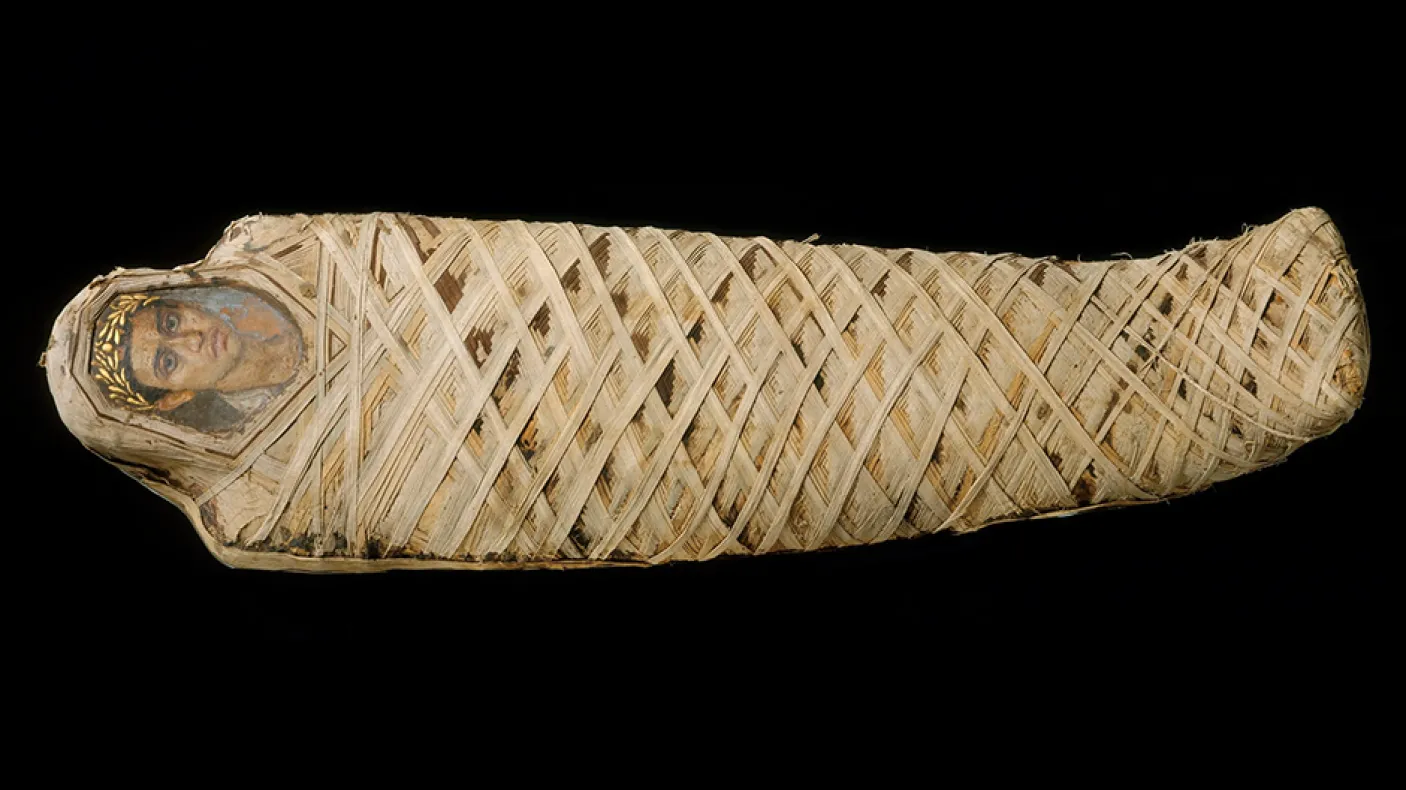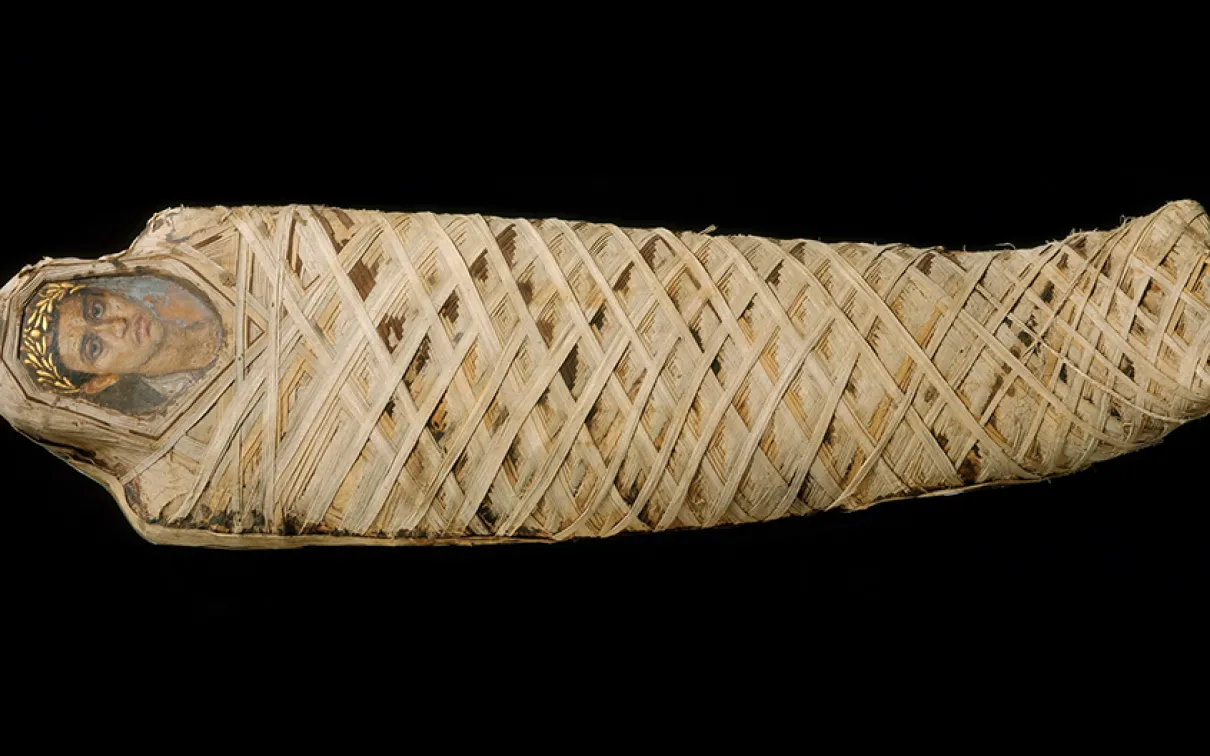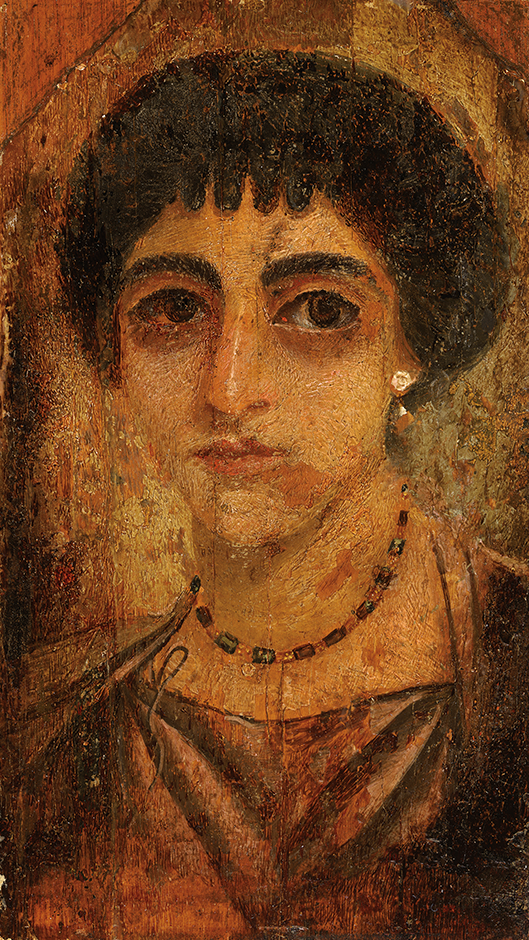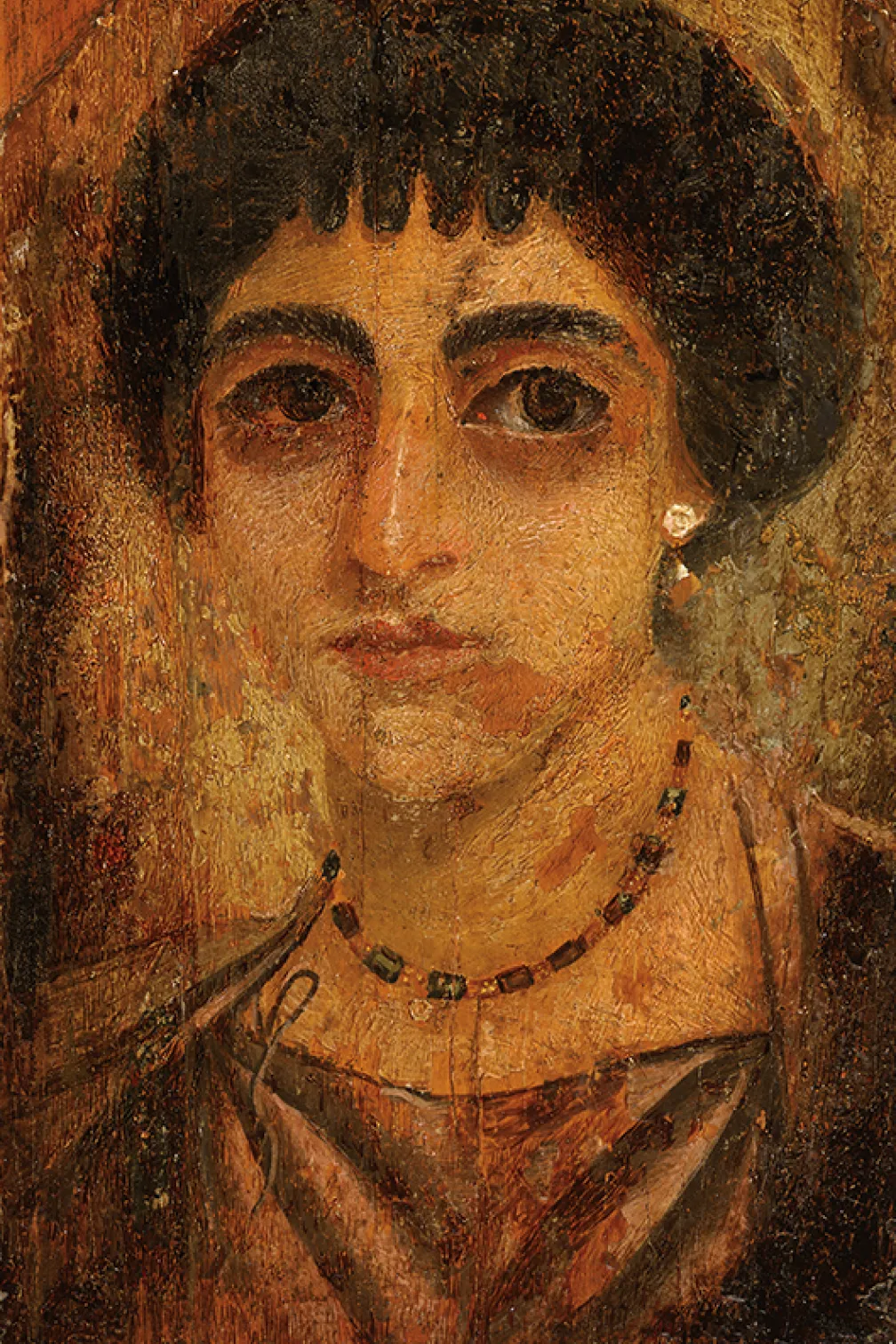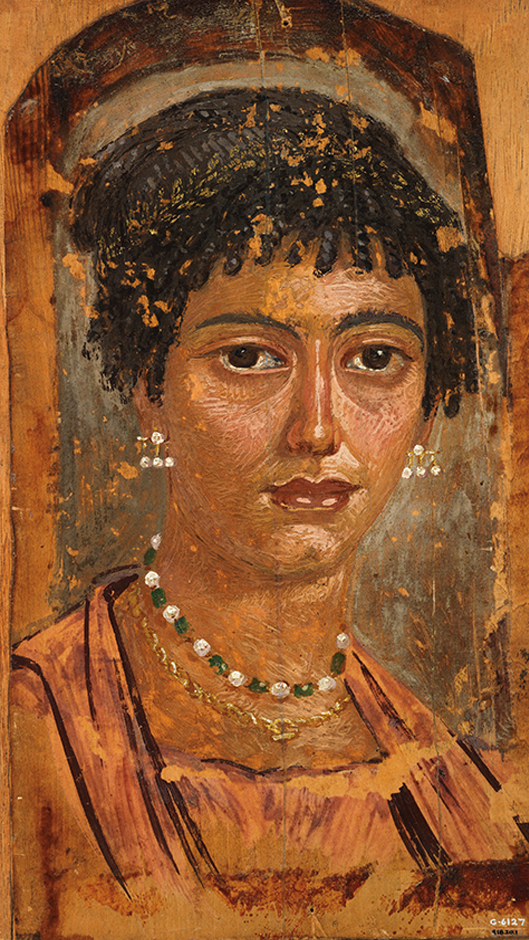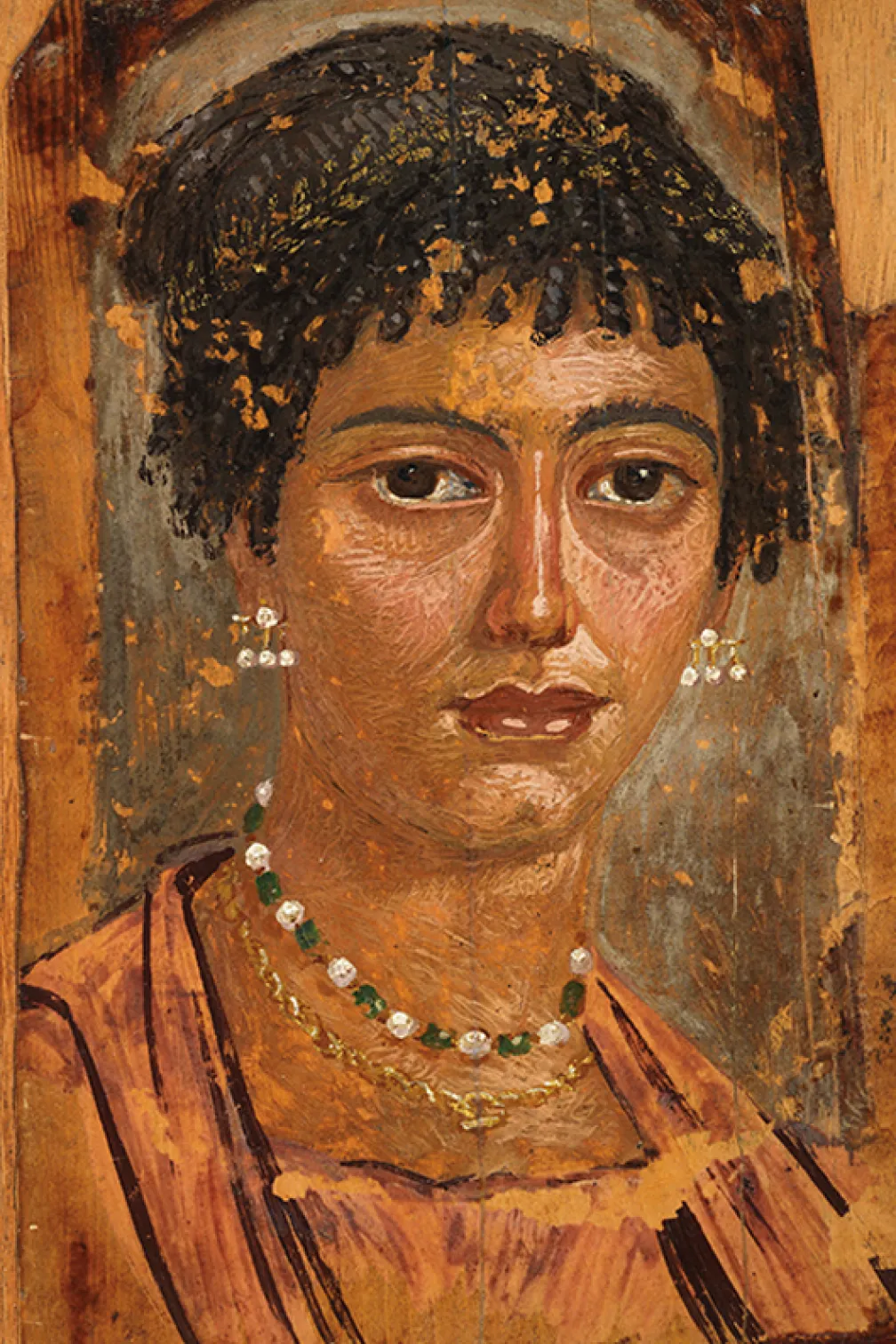A Romano-Egyptian Fayum mummy portrait comes back to ROM
Separated in 1912, two portraits are reunited after more than 100 years
Published
Category
Author
The ROM’s recent acquisition of a Romano-Egyptian Fayum
The ROM’s recent acquisition of a Romano-Egyptian Fayum mummy portrait from the National Gallery of Canada in Ottawa represents a noteworthy addition to our collection because it reunites two “sisters” who were separated more than 100 years ago. Their collecting history is also closely inked to that of the ROM and Canada.
Fayum mummy portraits are very important since they represent some of the earliest known, best preserved, and most finely painted portraits in Western art history.
After Egypt became a province of Rome
After Egypt became a province of Rome in 30 BC, Romans began settling there and adopted local practices including the mortuary ritual of mummification. By the first century CE, the Romans had introduced their own funerary custom of fastening and wrapping a portrait of the deceased, painted on a wooden panel, to the face of the mummy. This method of burial lasted for about 300 years. Mummy portraits have been found in cemeteries in the Fayum and other parts of Egypt; they are usually collectively referred to as Fayum mummy portraits.
These amazing lifelike portraits of men, women, and children have a universal appeal today. They show us not only a wide diversity of the people who once lived in Roman Egypt but also the intricacies of hairstyles, clothing, and jewellery that were popular two thousand years ago.
Romano-Egyptian Fayum mummy portraits
In 1888, Sir Flinders Petrie
In 1888, Sir Flinders Petrie discovered 81 mummy portraits at Hawara, an ancient Roman cemetery in the Fayum, Egypt. One of these Hawara portraits and a second example, found by Petrie at another burial site in the Fayum, were acquired by Charles Currelly, the ROM’s first director, at a Sotheby’s auction in London in 1912. Later that year, Currelly sold one of the mummy portraits to the National Gallery of Canada. And now, a century later, thanks to the generosity of the Mona Campbell Endowment Fund and the Louise Hawley Stone Charitable Trust, the two portraits are back together.
Our portraits showcase the superb painterly skills of their artists. With less reliance on preliminary underdrawings, the artists applied areas of colour that worked together to give each portrait the illusion of volume and depth as well as a sense of character and personality.
The woman depicted in the ROM’s new portrait has the delicate facial features of a young woman with large almond-shaped brown eyes, thick eyebrows, aquiline nose, well-modelled red lips, and a narrow chin. Her black hair is puffed out around her head with four separate curls falling over her forehead. She is wearing a disc and pendant earring and an emerald necklace with gold links and is draped in a tunic and thick mantle both of a dark crimson colour. Note the thick application of paint, lending it the appearance of an Impressionist painting.
The woman shown in the second ROM portrait is slightly more mature and matronly. Her features are very fine with high cheekbones, narrow nose, thick red lips, and prominent chin. Her finely rendered hair is arranged in ringlets and embellished with a gold wreath. She is wearing pearl earrings, a beryl and pearl necklace, and a gold necklace. In contrast to the technique of her “sister’s” portrait, the paint was applied in fine even layers.
The ROM’s Fayum mummy portraits were painted using the encaustic technique that involved adding pigments to beeswax and resin. The mixture was heated and applied quickly, before cooling, to the surface of a wood panel with a brush and tools, leaving a distinctive, richly textured surface.
Fayum mummy portraits are very important since they represent some of the earliest known, best preserved, and most finely painted portraits in the history of art. They are also an unmatched source of information on Egyptian, Greek, and Roman cultural traditions.
The two mummy portraits
The two mummy portraits are on display in the ROM’s Egyptian mummy portrait case on Level 3.
